“My life didn’t really begin until I met Ronnie,” Nancy Reagan wrote in her memoirs, a statement so ingenuously at odds with the mood of her age, not to mention the facts of her life, that it reinforces a larger truth. She was the Wife, the one with the Gaze, so devoted, so protective, that her own life and works, her needs and dreams, could be folded and fit into a tiny beaded handbag and tucked away as she focused every therm of energy on the American epic that was Ronald Reagan.
“Nancy came along,” Reagan once said, “and saved my soul.” Those who loved him should thank her, for never was a public man so faithfully served by a very private woman who read his needs, enabled his strengths, defused his weaknesses, and in the process displayed a love of country that refracted through her love of the man. Skeptical where he was trusting, meticulous where he was dreamy, equally stubborn but much more ruthless, she was able to grow in her role in a way that defied her many critics, and showed in twilight a grace and fortitude that cast her earlier course in a gentler light.
When she died on March 6 at the age of 94, it marked the end of a life and a love story the likes of which the modern White House had never seen.
Relive the Romance of Nancy and Ronald Reagan in Pictures
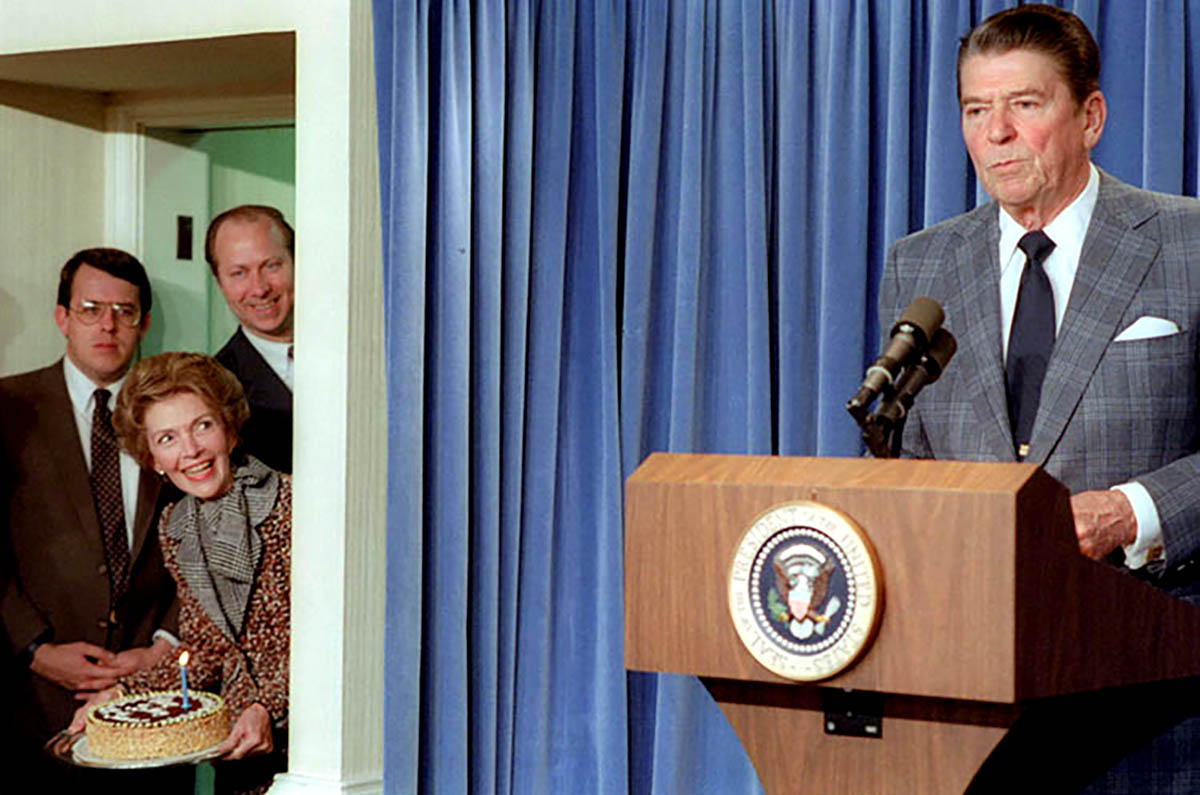
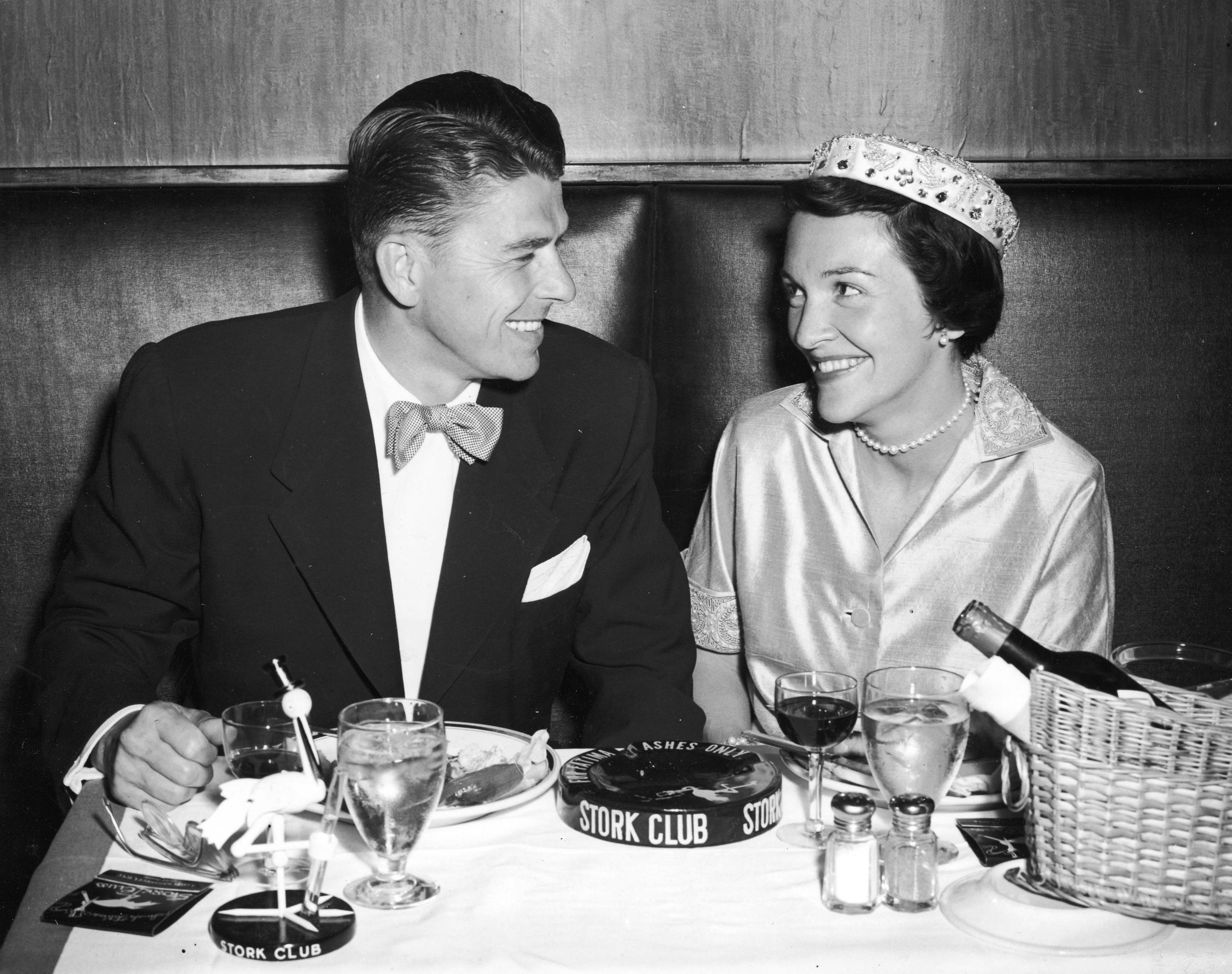
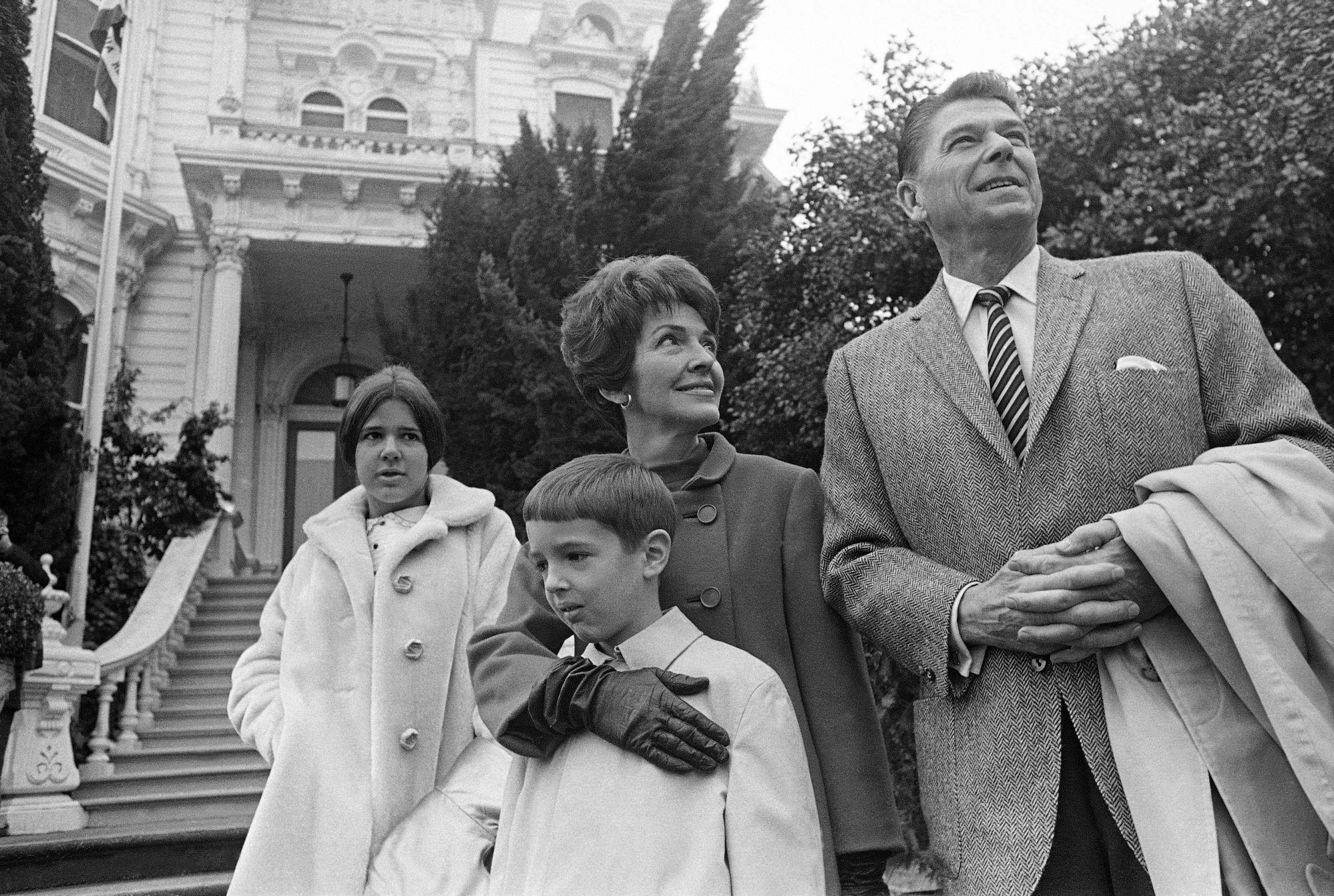

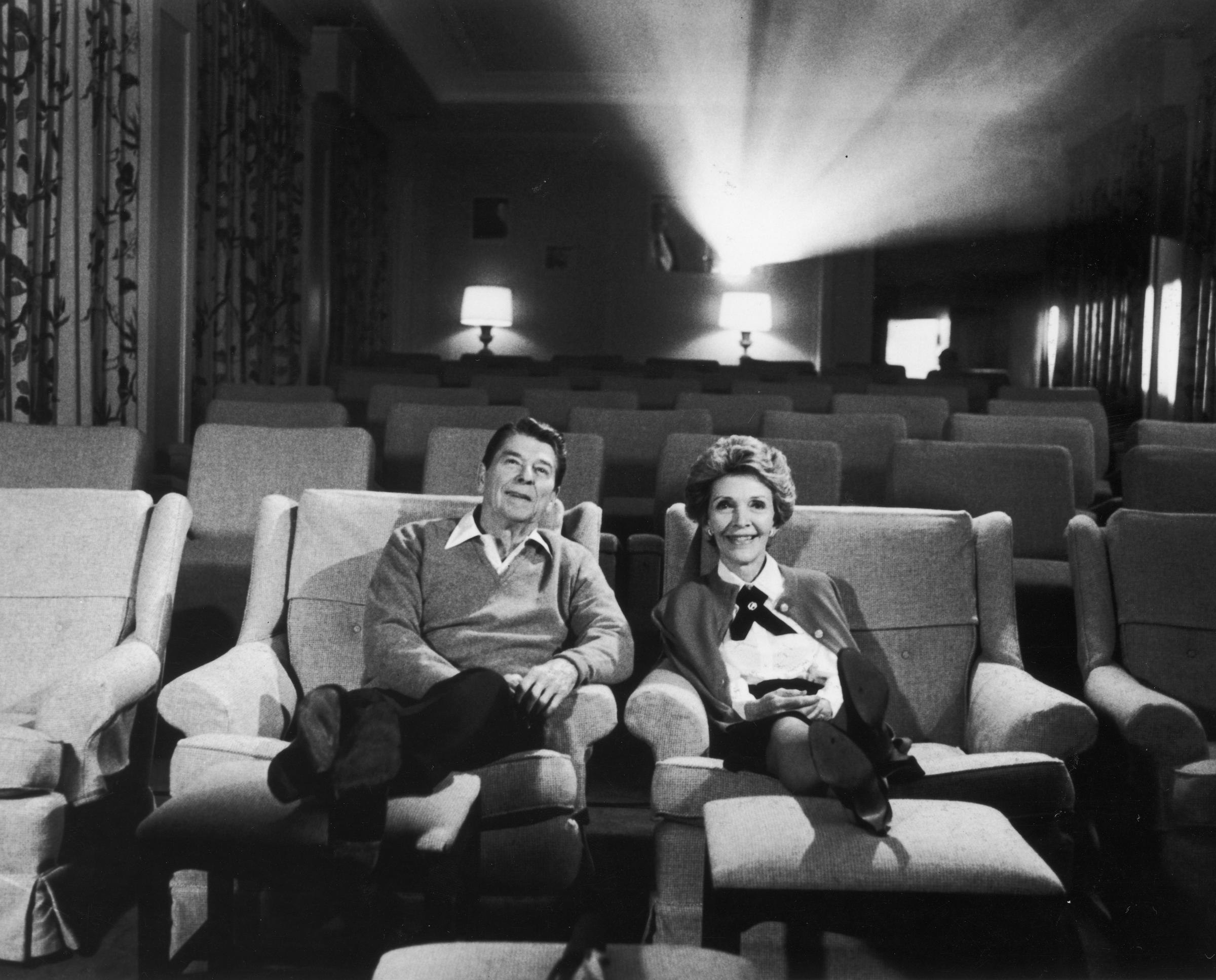

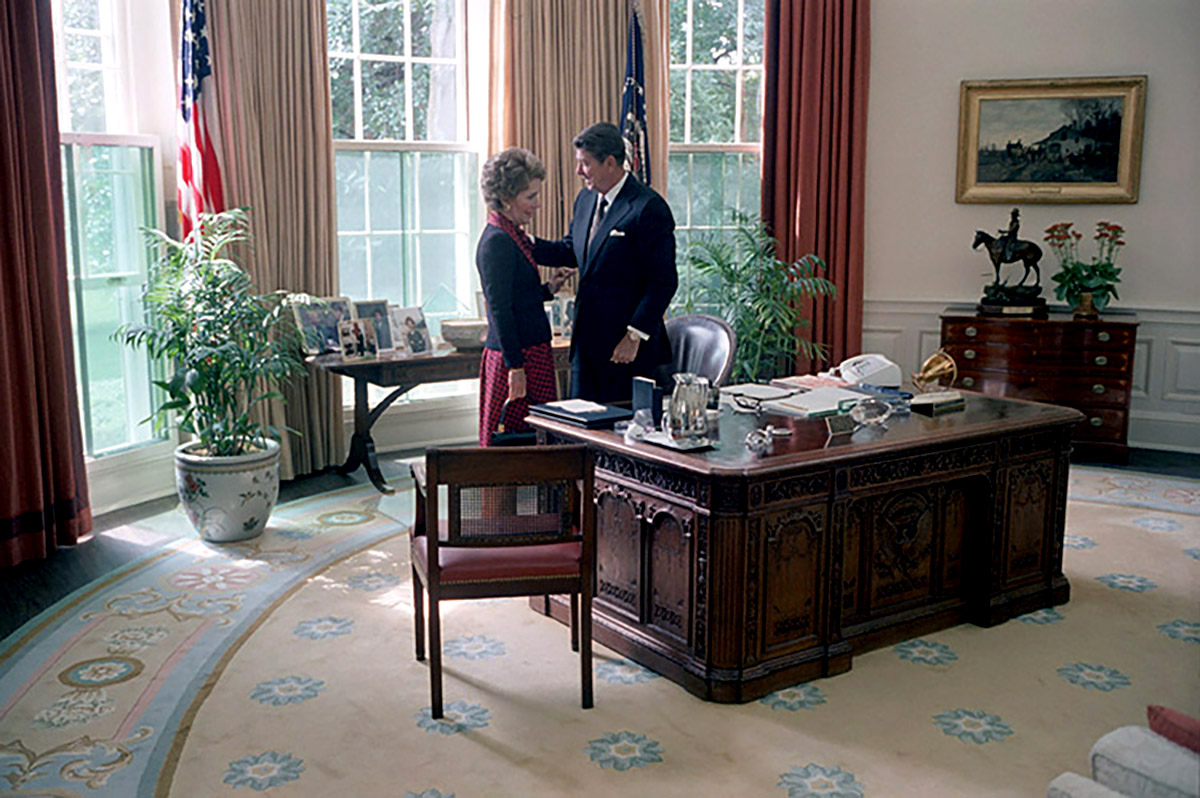
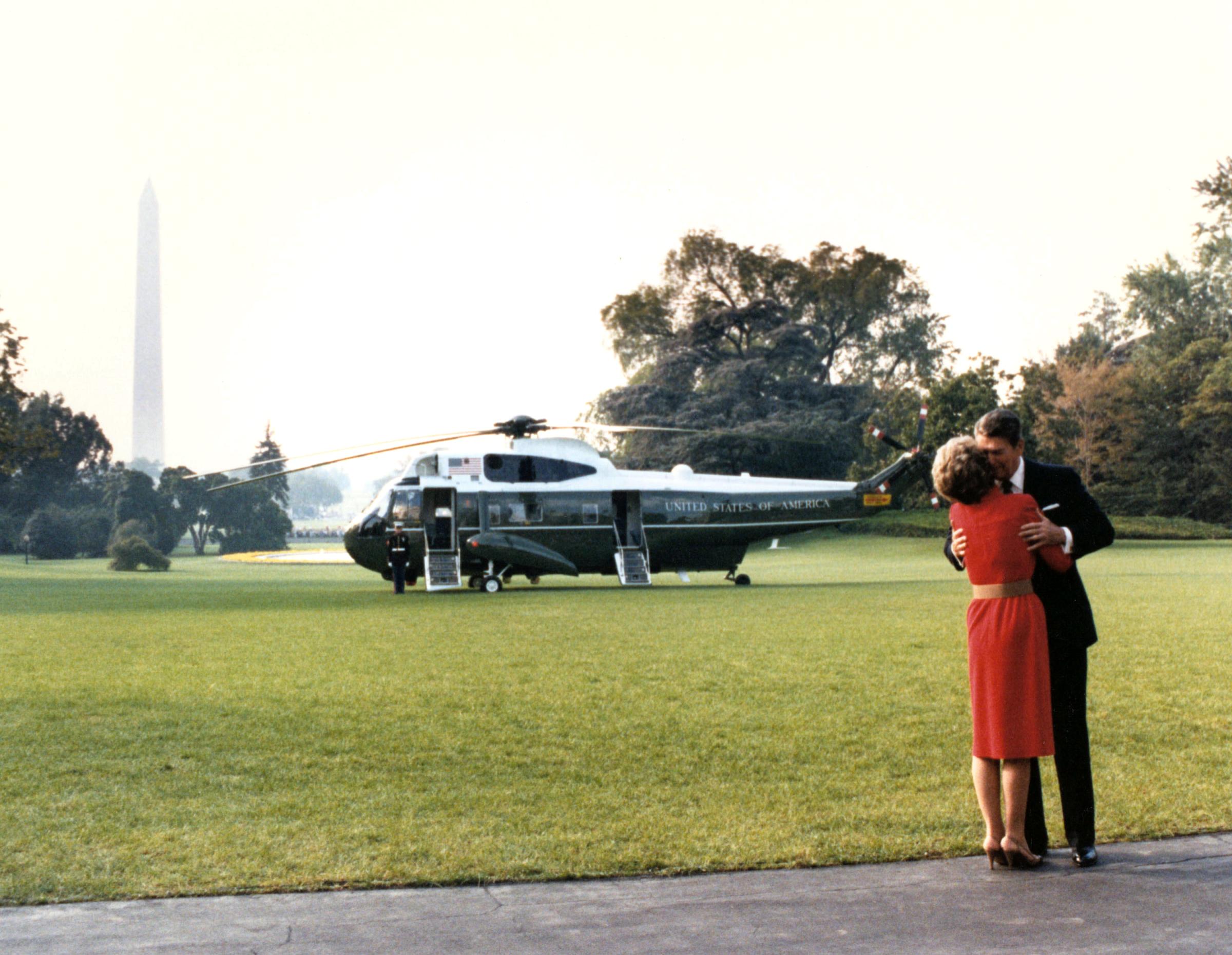
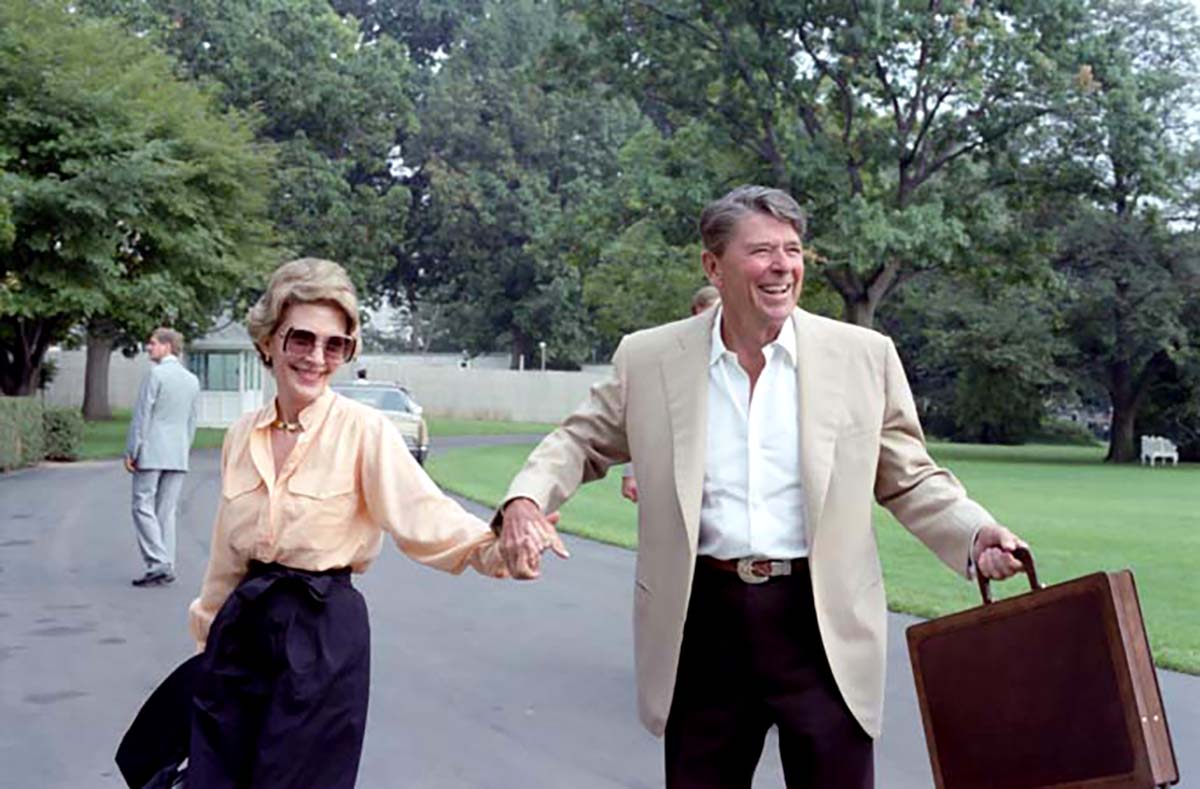



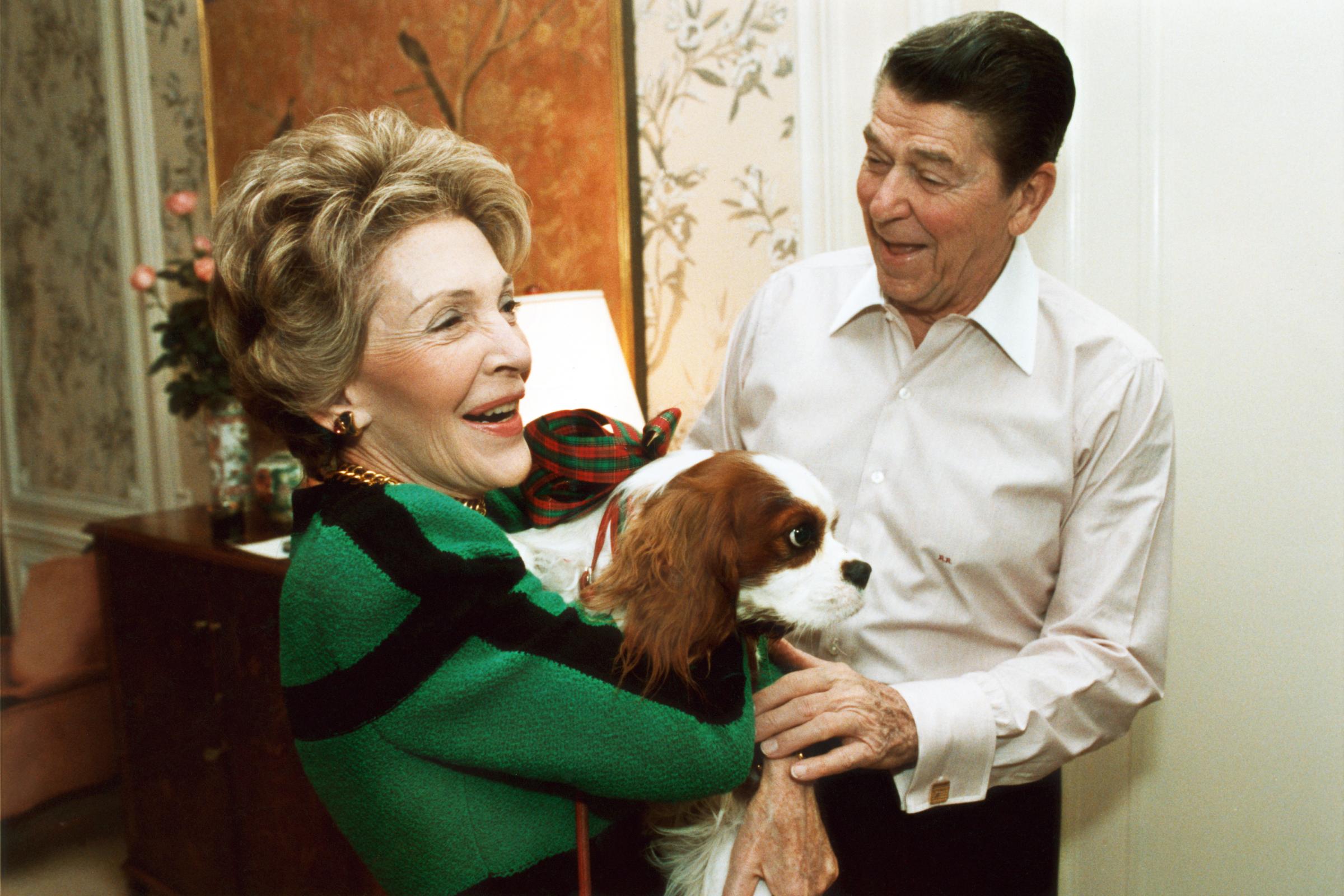

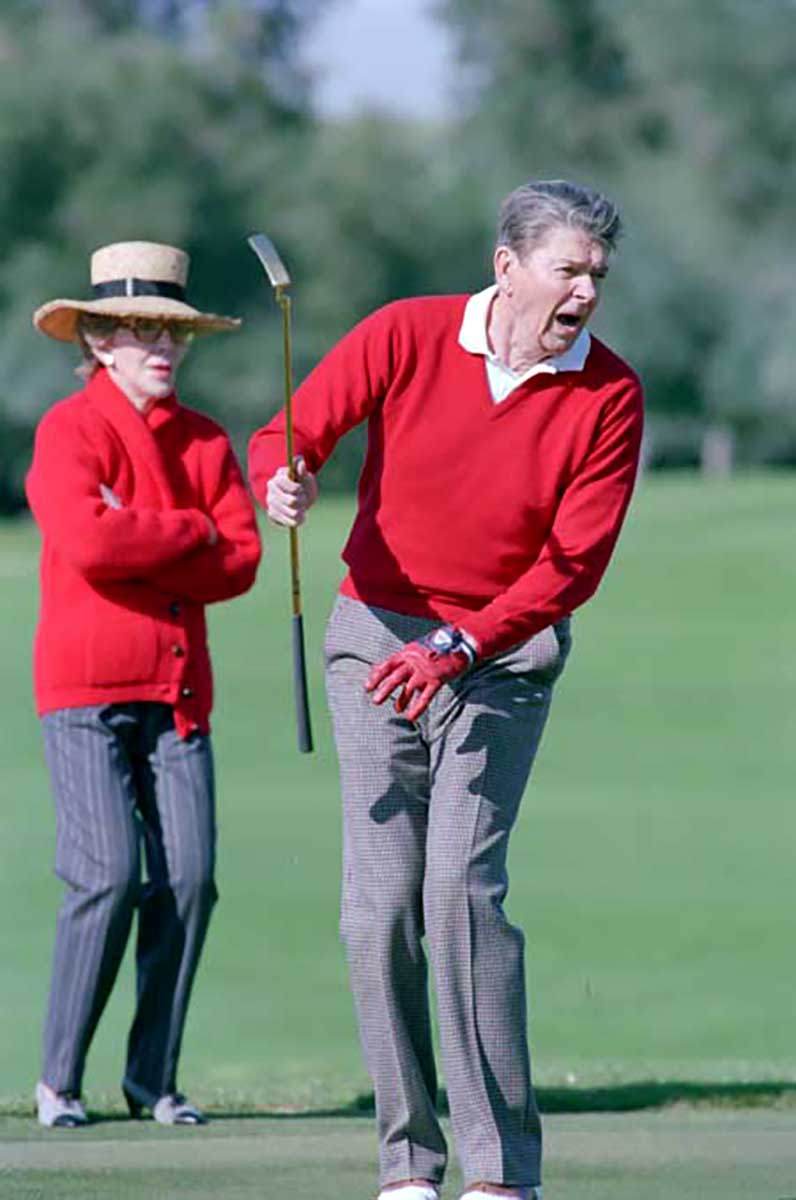
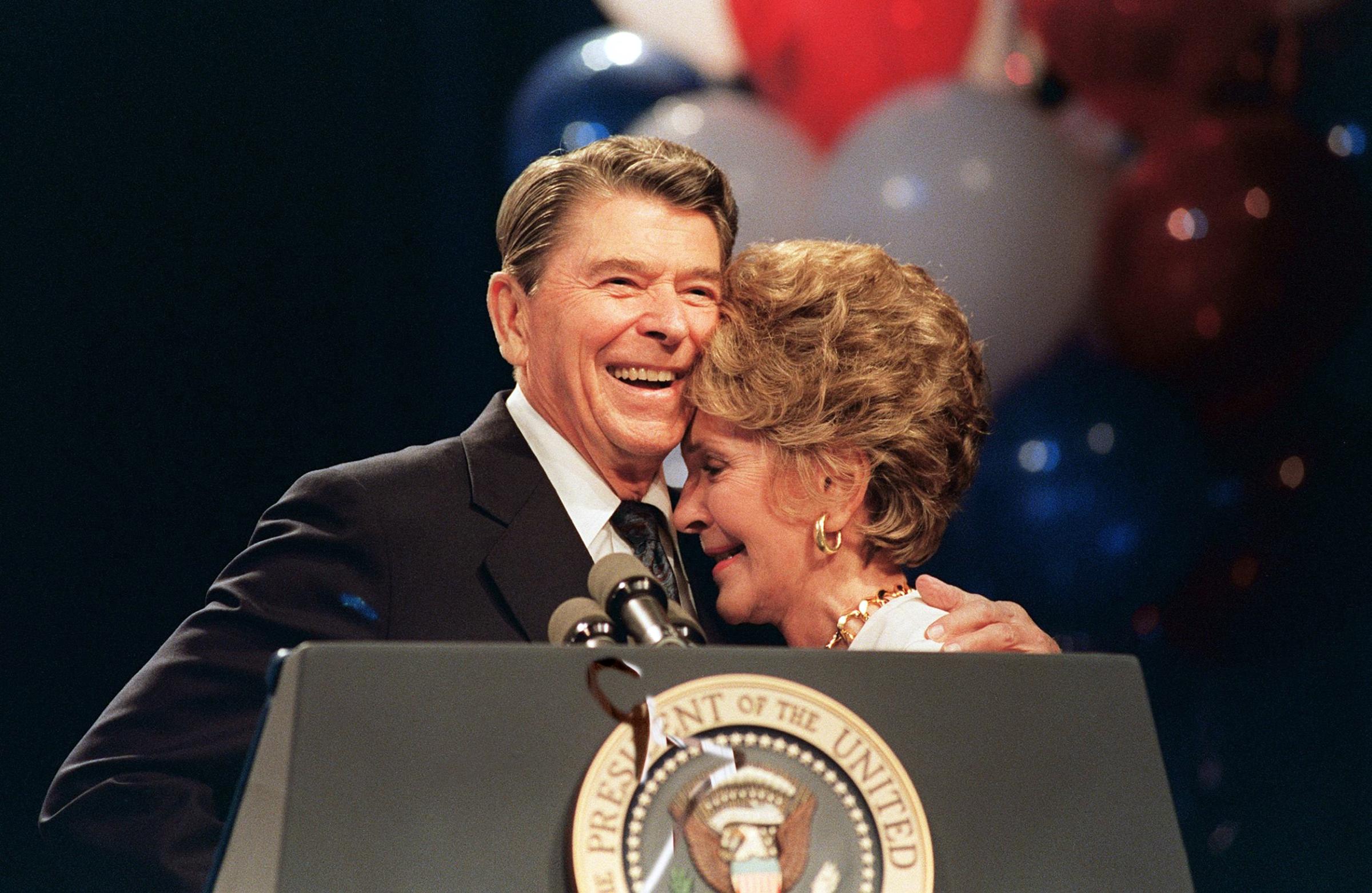
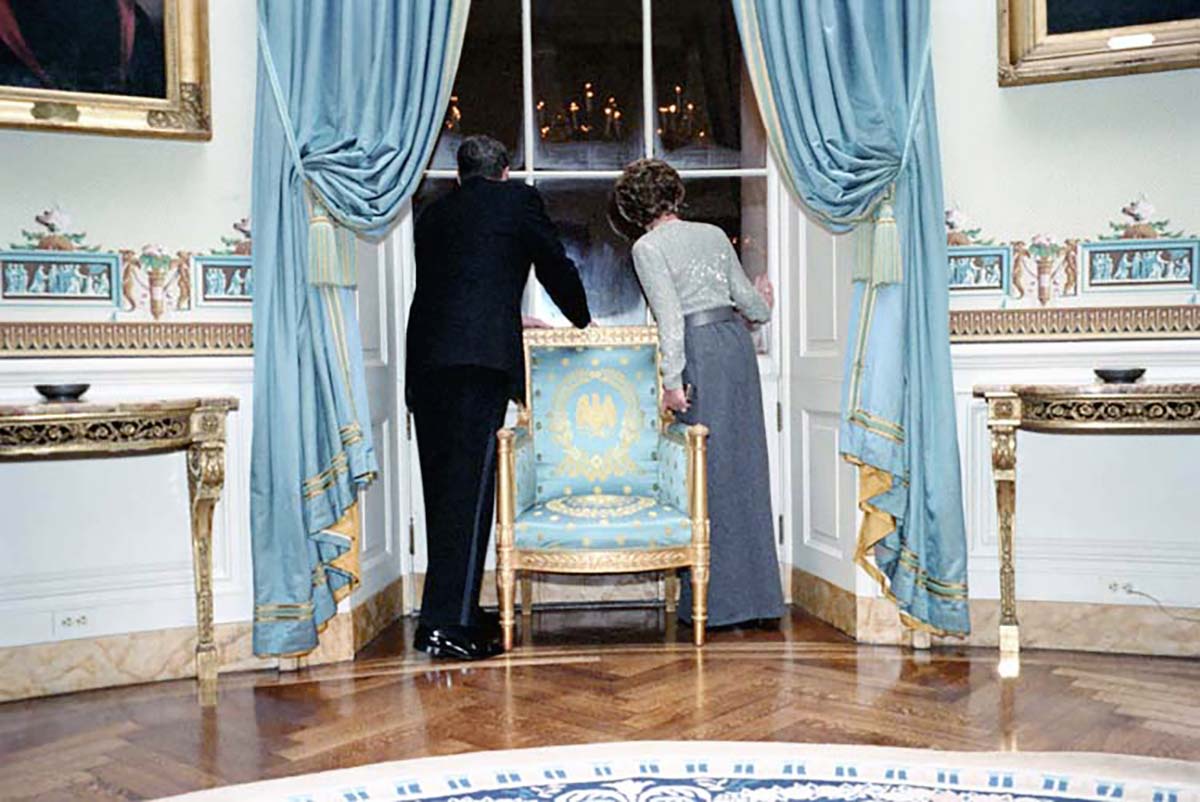
Anne Frances Robbins Davis Reagan was born in New York City in 1921 to a car salesman and an actress and spent her first six years with little idea of what a normal family would feel like. Her father abandoned them when she was a baby; her mother Edith went back to work with a traveling theater company. She sent “Nancy” to live with an aunt and uncle in Maryland and for the next few years acted the role of mother from a distance; Nancy would see her when Edith had a role in New York and the little girl got to ride the train up to watch her perform. “How I miss my baby!” her mother wrote at the bottom of every page of her diary.
But that all changed when Nancy was 8: Edith married a prominent neurosurgeon named Loyal Davis, who would eventually adopt Nancy as his own — though she always called him Dr. Loyal. The family moved to Chicago; suddenly hers was a life of field hockey and summer camp, nice clothes and high expectations. Ever the appreciative audience, she would sit in the operating room gallery and watch her stepfather perform brain surgery. She watched her mother struggle to be accepted by other fashionable wives, and learned: “Nancy’s social perfection is a constant source of amazement,” read an entry in her high school yearbook. She majored in English and drama at Smith, worked for a while as a sales’ clerk at Marshall Fields and a nurses’ aid before following her mother’s lead. A big break on Broadway opposite Yul Brynner got her an MGM screen test and a contract, and she was off to Hollywood in 1948.
Nancy Davis was not steamy or sultry enough to play the siren, though she did date Clark Gable briefly. (He had a quality that good courtesans also have,” she recalled. “When he was with you, he was really with you.”) She was typically cast as the loyal wife, in movies like The Next Voice You Hear. Her “childhood ambition,” she wrote on her MGM biographical questionnaire in 1949, was “to be an actress.” But her “greatest ambition” was “to have a successful, happy marriage.” She listed some of her phobias: “superficiality, vulgarity especially in women, untidiness of mind and person, and cigars.” That year she met Ronald Reagan, president of the Screen Actors guild, who was still recovering from his split with actress Jane Wyman; one newspaper account called it “a romance of a couple who have no vices,” with Nancy knitting Ronnie argyle socks.
“I don’t know if it was exactly love at first sight,” Nancy said, “but it was pretty close.” The two were married in March of 1952 in a secret ceremony at the Little Brown Church near Los Angeles; their daughter Patti was born that October and son Ron in 1958. Nancy would also be stepmother to Reagan’s children from his previous marriage, son Michael and daughter Maureen. She retired from movies in 1962 to be a full-time homemaker. When her husband was serving as a national spokesman for General Electric, the couple lived in a modern house in Pacific Palisades with every imaginable new technology.
“Our family is somewhat unusual,” Ron Reagan once observed. “We are people with very different personalities. I imagine that is why sometimes there is some friction.” By and large, these would not be easy relationships; one common theory held that the Reagans’ own love affair was so abiding, so intense that it didn’t leave much space for anyone else. Nancy herself attributed her husband’s emotional inaccessibility, that shell that was both so smooth and so impenetrable, to his alcoholic father and itinerant childhood, where constant moves made deep friendships impossible. He had room for only one — and she would be it. “There’s a wall around him,” she said in her memoirs, which she published in 1989 and dedicated: “To Ronnie, who always understood. And to my children, who I hope will understand.” It can be a great burden, to be the sole intimate of a solitary man — especially if he ends up being the President. “He lets me come closer than anyone else, but there are times when even I feel that barrier.”
It took the jaded natives of Hollywood and Sacramento and Washington some time to get used to a marriage so sentimental. They would always hold hands; he called her “Nancy Pants” and “mommy.” There would be notes scattered around the White House, especially on special occasions. “Whatever I treasure and enjoy,” Ronnie wrote, “ this home, our ranch, the sight of the sea — all would be without meaning if I didn’t have you. I live in a permanent Christmas because God gave me you.” Every marriage finds its own balance, she used to say. He was relentlessly upbeat: she did the worrying for both of them. She was obsessive about details where he seemed cavalier; he was all-forgiving, while she could hold a grudge. But they were equally solicitous and protective of each other. She recalls a dinner with presidential historians, where Librarian of Congress Daniel Boorstin observed that “We have never had a presidential couple like the two of you, and that alone is an important historical fact. The love and devotion you show each other isn’t seen much around here these days.”

It is hard for anyone married to a public figure to bear the attacks aimed at the person they love. But Nancy Reagan had an even harder challenge: her husband was so popular that attacks just skidded off his shiny image; but she was a different story, inscrutable where he seemed so transparent, cool and cautious where he was all warmth and tall tales and high hopes. It started from her first days as First Lady of California, after he won his race for governor in 1966. She discovered that the 1877 mansion, which reminded her of a funeral home, was officially a “firetrap,” as the local authorities put it. She said it was concern for her family’s safety that inspired their move into a fancy suburb; her critics called it snobbery, the hostility only partly allayed in the years that followed by her efforts to help returning Vietnam vets and promote the Foster Grandparents program. Her smile was “the smile of a woman who seems to be playing out some middle-class American woman’s daydream circa 1948,” Joan Didion wrote a profile in the Saturday Evening Post in 1968, the smile “a study in frozen insincerity.” When Michael Deaver went to work in the governor’s office, his portfolio included the “Mommie watch”; Nancy was described to him as implacable, demanding, the “dragon lady.”
Whatever scrutiny and skepticism she endured in California, however, was nothing compared to what was waiting for her in Washington, when she arrived in 1981 to begin what she’d come to describe as “the most difficult years of my life.” Betty Ford had been about candor and camaraderie; Rosalyn Carter was earnest, high protein. The Carters had sold off the presidential yacht, turned down the thermostat, offered inaugural ball tickets for $25. But what to make of Nancy, in the icy Galanos inaugural gown, ($25,000), all the Hollywood friends. The Reagans’ arrival signaled the Washington was about to enter a whole new age. The trumpeters were back on the balcony to welcome foreign visitors; the Chief would be Hailed when he entered the room. Johnny Carson joked that her favorite junk food was caviar. When she arrived in Washington her critics saw her as shallow and vain; by the last year the caricature was almost the opposite, of the all powerful manipulator. She recalls the Washington Post’s Katherine Graham observing that many of the stories were written by younger veterans of the feminist movement: “They just couldn’t identify with you. You represented everything they were rebelling against.”
Once again she found herself trying to make a home in the nation’s most famous house, but one that had grown shabby and dull, with rooms that hadn’t seen new paint in decades. Feeling she was a custodian of a national treasure, she solicited $822,000 in private donations to redecorate, fix the floors and hardware, as part of what would become a $45 million renovation of the whole White House complex. Even though the upgrade was long overdue, she paid a price for it — and especially for her decision to replace the White House china, which by that time had had so many pieces broken (or pinched) that at Reagan’s first state dinner, for Margaret Thatcher, she used pieces chosen by both Presidents Roosevelt, Wilson and Truman, since there wasn’t enough of any one pattern to go around. It was her misfortune that at the same time word broke that the Agriculture Department would count ketchup as a vegetable in school lunches, came the news of the purchase of $200,000 for more than 4,000 pieces of new china, thanks to the help of the private Knapp foundation. She was accused of violating the new Ethics in Government act by accepting free clothes from designers, or borrowing them but not reporting it. Soon Queen Nancy was once more the easy target compared to her amiable husband, at a time when the rest of the country was feeling squeezed by recession. By the end of 1981 she had a higher disapproval rating than any First Lady of modern times.
“The first year was a terrible year,” she said, made worse by the loss of her step father, a cancer scare and most crushing, the assassination attempt that left four men shot, Reagan and spokesman James Brady badly wounded. Years later, she said, she still woke up at night remembering the scene at the hospital; the blood and bandages and tubes, a blue pinstripe suit shredded, a husband pale and grey, and closer to dead than anyone knew at the time.
She had always been highly protective; but after the shooting, her monitoring of her husband’s activities had a more desperate urgency, to the point, famously, of consulting an astrologer Merv Griffin introduced her to, about when it was too dangerous for him to be making public appearances. “I cringe every time we step out of a car or leave a building,” she told Joan Quigley, and she began running the President’s schedule by her, a small balm on the general sense of helplessness she felt when it came to his safety.
Aware of his metabolism and what he needed to perform at his best, she made sure he got eight hours of sleep at night and had breaks during the day. During the 1984 campaign she complained that speechwriters were creating too many different versions of speeches, which was draining the President’s energies; after a bad first debate against Walter Mondale, she warned that his advisers had crammed his head with too many facts and figures, and that they needed to back off.
She also protected him from threats closer at hand, particularly aides whom she suspected were more focused on their own agendas than his presidency. In his book about her years later, Deaver said that if the President had a single great failing, it was that he had no good sixth sense about people, or an ability to see their darker side; the reluctance to discipline extended even to his children. “Nancy had to fill that role as well,” Deaver argued.
“Even with her own family, she had to play the heavy, while Reagan remained the man in the white hat.” Reagan’s political gift involved being able to see the big picture and sell it, Nancy’s expertise was more intimate, analytic, with a shrewd sense of how an organism like the White House staff worked. She had studied both Nixon and Kissinger’s memoirs before arriving in Washington, and she was alert to its ways. “I think I’m aware of people who are trying to take advantage of my husband — who are trying to end-run him lots of times — who are trying to use him — I’m very aware of that,” she told reporter Chris Wallace in 1985. More aware, she added, than Reagan himself. “I try to stop them.”
He was, she said, “a soft touch,” especially when it came to cleaning out dead wood: “I think it’s the eternal optimist in him,” she said, “his attitude that if you let something go, it will eventually work itself out. Well, that isn’t always so.” She was viewed as the power behind the scenes in the placement and replacement of various top advisers and Cabinet officers, often joining forces with the house pragmatists, James Baker and Deaver. Her role in the ouster of Chief of Staff Don Regan inspired New York Times columnist William Safire to liken her to Edith Wilson. “Increasingly she took on the tough jobs that Reagan couldn’t or wouldn’t handle,” Deaver said. “Particularly staff decisions that were sure to make enemies.”
And she would always earn the ire of hard-liners who saw her as a strong voice in pressing Reagan to reach out to Mikhail Gorbachev and push for disarmament treaties. “I knew that “warmonger” was never a fair description of Ronnie’s position, but I also felt that his calling the Soviet Union an evil empire was not particularly helpful,” she revealed in her memoir. “The world had become too small for the two superpowers not to be on speaking terms.” Even as Reagan was celebrating a triumphant signing of the INF treaty, which eliminated intermediate-range nuclear and conventional ballistic missiles, Nancy was coping with the death of her own mother and a diagnosis of breast cancer. Somehow even her decision to have a mastectomy rather than lumpectory brought her under fire. But as time passed, economic conditions improved and a concerted effort to adjust her image bore fruit. She came to rank among the most country’s most admired women; she relaxed a bit, stepped out on her own, won over even the well shellacked press corps with a Gridiron dinner parody of herself as a bag lady singing “Second Hand Clothes.” (“So what if Ronnie’s cutting back on welfare,” she sang, “I’d still wear a tiara in my coiffed hair.”) “Socko!” pronounced the New York Times.
Her most famous moment as First Lady came almost by accident: the Just Say No campaign against drug use at a time when abuse was running out of control. “I was in California and I was talking to, I think, fifth graders, and one little girl raised her hand and said, ‘Mrs. Reagan, what do you do if somebody offers you drugs?’ And I said, ‘Well, you just say no.’ And there it was born. I think people thought that we had an advertising agency over who dreamed that up — not true.” Reagan called her “my secret weapon” in his fight against drug use. Some dismissed her effort as window dressing; residents of Lake View Terrace north of Los Angeles blocked efforts to build an advanced treatment center that would have been named for her. But in the face of criticism, she would log more than a quarter million miles in the U.S. and abroad to discuss prevention and visit rehab centers. She hosted a 1985 White House conference on drug abuse, featuring wives of world leaders, and three years later became the first First Lady to address the U.N. General Assembly, speaking on drug-trafficking laws. Many aspects of the war on drugs may have been ill-conceived or entangled in politics; but the effort to change attitudes among kids was one aspect that showed results. A study in 1988 found that only 39% of high school seniors reported using illegal drugs in the last year, down from 53% when Reagan took office.
But even those triumphs would not come unalloyed. During the White House years, the Reagans were especially estranged from daughter Patti, whose 1992 autobiography, The Way I See It, revealed, among other things, that she had had herself sterilized at age 24 (an operation which was later reversed) because she feared becoming an emotionally abusive mother like her own. She charged that Nancy’s commitment to fighting drug abuse was born of the First Lady’s own struggle with prescription tranquilizers and sleeping pills. “I agonized over revealing this,” Davis told the Los Angeles Times when the book came out. “What I kept coming back to was that my mother has gotten an indictment of hypocrisy in her choice of the antidrug issue. ‘What does she know about it?’ and ‘It’s a PR stunt.’ I never saw it as hypocritical. I saw it as both an act of denial and a cry for help.”
In 1994, when President Reagan revealed in a letter to the American people that he was afflicted with Alzheimer’s, he observed that “I only wish there was some way I could spare Nancy from this painful experience.” Thus began what Nancy would come to call the “long goodbye,” a decade spent tending to the husband who in time could not recognize her any more. Anyone who imagined her post–White House would be one of glamour and travel and parties saw instead a kind of cocooning, as she stayed close to home, seldom entertaining, excusing herself even from luncheons to go and call and check on him.
Even her critics came to admire the grace and the steadfastness with which she cared for her husband in twilight; onetime political adversaries, meanwhile, were surprised to find themselves with a new and potent ally. Having seen and suffered firsthand the effects of a ravaging disease, Nancy Reagan became a powerful voice for embryonic stem-cell research. She rejected the view of pro-lifers: ”I just don’t think they understand that it’s not taking a life,” she told Katie Couric. “It’s trying to save countless lives.” When Congress debated federal research funding she was on the phone with lawmakers, especially self described Reagan Republicans, trying to peel votes away from the Bush White House. “There are a lot of my colleagues who got calls from Nancy Reagan,” said California Republican David Dreier, who had known the Reagans since college, “who say that was a very important part of the decisionmaking process.”
In May 2004, a month before her husband died, Nancy appeared at a fundraiser for stem-cell research. “Ronnie’s long journey has finally taken him to a distant place where I can no longer reach him,” she said. “Because of this, I’m determined to do whatever I can to save other families from this pain.” A month later, she was the tiny, pale figure bent over the dark casket as America mourned one of its giant Presidents. She had worked over every detail of the 300-page blueprint for the commemorations.
Sometimes, she told ABC’s Diane Sawyer a year later, she still talked to him, wandering around a house filled with pictures of him. “He’s very much with me,” Nancy said. “Everything still is all about him.”
More Must-Reads from TIME
- Cybersecurity Experts Are Sounding the Alarm on DOGE
- Meet the 2025 Women of the Year
- The Harsh Truth About Disability Inclusion
- Why Do More Young Adults Have Cancer?
- Colman Domingo Leads With Radical Love
- How to Get Better at Doing Things Alone
- Michelle Zauner Stares Down the Darkness
Contact us at letters@time.com